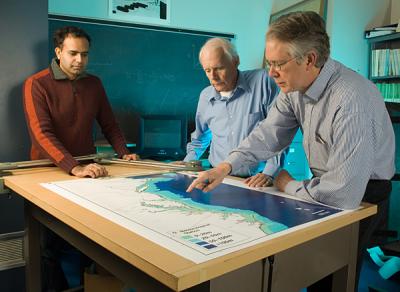 You might not grasp just how much 330GW or enough energy is. Its enough to power “nine states from Massachusetts to North Carolina, plus the District of Columbia–with enough left over to support a 50 percent increase in future energy demand”. Or so finds a new study from the University of Delaware, College of Marine Studies, who are quickly gaining a reputation for wind studies. The region is currently using about 186 GW (Gigawatts) of energy. The east coast has some of the largest urban centers in America, to supply clean wind energy to these places would reduce American CO2 emissions immensely.
You might not grasp just how much 330GW or enough energy is. Its enough to power “nine states from Massachusetts to North Carolina, plus the District of Columbia–with enough left over to support a 50 percent increase in future energy demand”. Or so finds a new study from the University of Delaware, College of Marine Studies, who are quickly gaining a reputation for wind studies. The region is currently using about 186 GW (Gigawatts) of energy. The east coast has some of the largest urban centers in America, to supply clean wind energy to these places would reduce American CO2 emissions immensely.
While 330 gigawatts is the average output of the entire offshore wind resource over the Mid-Atlantic Bight, the researchers note that offshore wind is not uniform and offer suggestions for addressing power fluctuations.
“Over a large area like this, the wind blows stronger at some times and places, weaker at others,†Kempton said.
To make wind power more uniform, the study shows that multiple sites could be connected through power lines to reduce the number of times of both maximum and minimum power. Changes in new and replacement energy-using devices, including automobiles, also could provide for greater power storage.
“Battery and plug-in hybrid automobiles, for example, have large storage that is unused when the car is parked,†Kempton said.
With a scientifically reliable estimate of the region’s offshore wind power potential now in hand, how likely are we to actually install more than 100,000 wind turbines off the Mid-Atlantic coast?
Kempton said it’s a matter of priority. “Today, market forces and incremental technology developments will gradually make offshore wind the least-cost power in more and more East Coast locations,†Kempton said. “On the other hand, if climate change becomes a much greater priority for the United States, our study shows how we could displace more than half the carbon dioxide emissions of the Mid-Atlantic area quickly, using existing technology.â€
On the practicality of producing 166,720 wind turbines, co-author Richard Garvine noted, “the United States began producing 2,000 warplanes per year in 1939 for World War II, increased production each year, and, by 1946, had sent 257,000 aircraft into service.
“We did that in seven years, using 1940s technology,†he said. (via)
I really like the idea of plug in hybrid cars being used as grid connected energy storage options for the future. Wind power would be fed into the grid all day and all night. Your plug in hybrid car with its big battery would sit around connected to that grid most of the time storing up that wind energy. I see no reason why these electric cars could not also feed energy back into the grid when it was needed. In a future that will most likely see millions (if not hundreds of millions) of battery powered cars that spend most of the time plugged in (while you are at work, while you sleep, while you go shopping, etc) they would provide a really innovative energy storage medium for an energy supply that is variable.
Variable though it may be the article does make a good point, its almost always windy some place on the mid-Atlantic coast. With enough interconnection these wind farms would act like one big power plant, ramping up and down as the wind changed, but always providing a reliable and predictable output.
Thanks for taking a few of us.
best links
[url=http://rcxckj.bestfreewebspace.net/map4.html] My Best Links [/url] [url=http://tuidli.anycities.com/map1.html] my favourite links [/url]